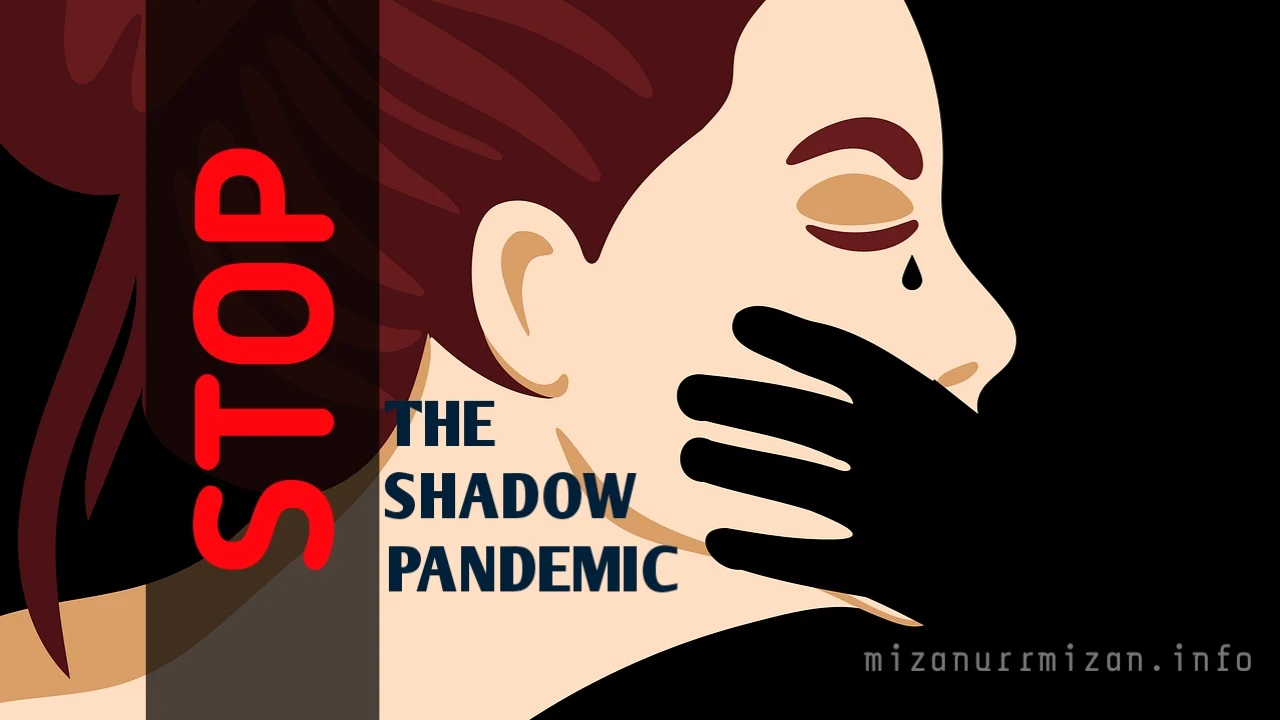The COVID-19 pandemic has not only challenged healthcare systems and economies worldwide but has also brought to light another crisis lurking in the shadows—the surge in domestic violence cases. As nations grappled with lockdowns and social distancing measures to curb the spread of the virus, reports of domestic violence incidents surged, leading to the coining of the term "shadow pandemic." This article delves into the complex landscape of domestic violence amidst COVID-19, exploring its root causes, exacerbating factors, impact on vulnerable populations, and the urgent need for comprehensive interventions.
Definition of Shadow Pandemic
The term "shadow pandemic" encapsulates the hidden crisis of domestic violence that has intensified alongside the COVID-19 pandemic. Coined to draw attention to the parallel surge in intimate partner violence and abuse within households, the concept highlights the interconnectedness between public health emergencies and the exacerbation of existing social issues. The shadow pandemic serves as a poignant reminder of the insidious nature of domestic violence, often overshadowed by the immediate concerns of infectious disease outbreaks but carrying profound and lasting repercussions for individuals, families, and communities.
Understanding Domestic Violence
Domestic violence encompasses a range of abusive behaviors, including physical, emotional, sexual, and financial abuse, inflicted by one intimate partner upon another. It is a pervasive global issue, transcending geographical, cultural, and socioeconomic boundaries. Domestic violence thrives in environments characterized by power imbalances, gender inequality, and social norms that condone or normalize abusive behaviors.
The Impact of COVID-19 on Domestic Violence
The COVID-19 pandemic disrupted the social fabric of societies worldwide, creating conditions ripe for the escalation of domestic violence. Lockdown measures confined individuals to their homes, often trapping victims with their abusers and limiting their access to support networks and services. Economic uncertainty, job losses, and heightened stress exacerbated tensions within households, contributing to an increase in abusive behaviors.
Vulnerable Populations and Hidden Victims
Among the most vulnerable to domestic violence during the pandemic are women, children, the elderly, and marginalized communities. Women, in particular, bore the brunt of the shadow pandemic, facing heightened risks of intimate partner violence and femicide. Children, isolated from protective environments such as schools and childcare facilities, became invisible victims of domestic abuse, with limited avenues for seeking help or support.
Technology as a Double-Edged Sword
While technology provided a lifeline for connectivity and access to resources during lockdowns, it also facilitated new forms of abuse and control within domestic settings. Perpetrators utilized digital platforms to monitor and stalk their victims, perpetuating psychological and emotional abuse through cyberbullying, harassment, and surveillance.
Barriers to Seeking Help
Numerous barriers hinder victims of domestic violence from seeking help and accessing support services, particularly amidst the constraints imposed by the pandemic. Fear of retaliation, financial dependence, cultural stigma, and lack of awareness about available resources often deter individuals from reaching out for assistance. Limited access to shelters, legal aid, and healthcare exacerbates the challenges faced by survivors seeking to escape abusive environments.
Innovations in Support Services
Despite the challenges posed by the pandemic, organizations and service providers have adapted innovative approaches to deliver support and assistance to survivors of domestic violence. Virtual counseling sessions, online support groups, and chat-based helplines have emerged as essential tools for providing confidential and accessible support to individuals in need. Community-based initiatives and grassroots organizations have played a pivotal role in reaching marginalized populations and providing culturally sensitive interventions.
Policy Responses and Legislative Frameworks
Governments and policymakers have a critical role to play in addressing the shadow pandemic and safeguarding the rights and well-being of survivors. Strengthening legal frameworks, allocating adequate resources to support services, and implementing proactive measures to prevent domestic violence are essential steps in mitigating the impact of the crisis. Multisectoral collaboration between government agencies, law enforcement, healthcare providers, and civil society organizations is imperative to enact comprehensive and effective responses.
Building Resilience and Empowering Survivors
Empowering survivors of domestic violence involves providing them with the tools, resources, and support networks necessary to rebuild their lives and break free from cycles of abuse. Comprehensive interventions encompass legal advocacy, economic empowerment programs, trauma-informed counseling, and housing assistance to ensure survivors can access the resources needed to thrive independently.
Addressing the Root Causes
To truly eradicate domestic violence, efforts must extend beyond addressing its manifestations to tackling its underlying root causes. Gender inequality, social norms that perpetuate violence, and systemic injustices must be confronted through education, advocacy, and policy reforms. Cultivating a culture of respect, equality, and nonviolence within families and communities is essential in fostering healthy relationships and preventing future incidents of domestic abuse.
A Call to Action
As the world navigates the ongoing challenges posed by the COVID-19 pandemic, addressing the shadow pandemic of domestic violence must remain a priority. It requires collective action, solidarity, and unwavering commitment to upholding the fundamental human rights of all individuals, free from violence and coercion. By raising awareness, challenging societal norms, and investing in prevention and support services, we can create a world where every individual can live free from fear and abuse.
Final Words
The shadow pandemic of domestic violence underscores the urgent need for a coordinated and multifaceted response to address the intersecting crises facing communities worldwide. By amplifying the voices of survivors, challenging structural inequalities, and fostering a culture of empathy and respect, we can work towards building a future where domestic violence is eradicated, and every individual can live with dignity, safety, and autonomy.


Post a Comment
Write you think.